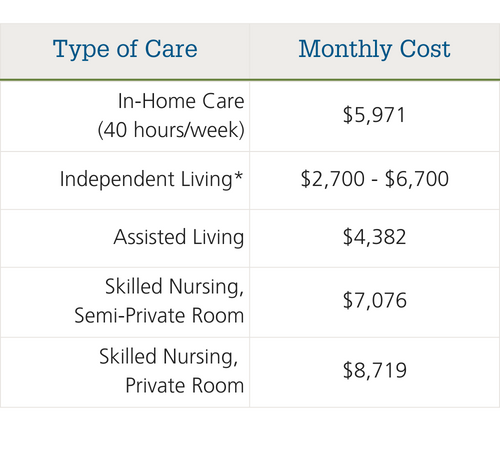Senior Living vs. in-home care: How to Decide
As we age, we often face tough decisions regarding our living situation. People often research and compare two options: receiving in-home care versus moving into a senior living community. For many elderly individuals and their families, it’s difficult to shake the preconceived notions of what an “old folk’s home” looks like. And for others, the concern of losing their privacy if they move into a retirement community makes in-home care seem preferable.
The temptation to ‘figure it out later’ or to ‘wait until I really need help’ is strong. We understand.
Moving into a senior living community is not only a physical move but a mental and emotional change as well. Unfortunately, when you wait too long, your choices are much fewer, and you can also miss out on the opportunity to maintain and enjoy your independence.
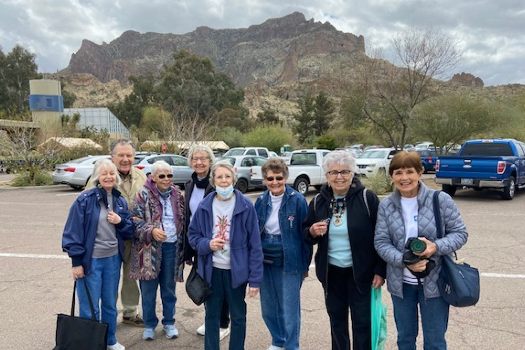
This post will look into the different types of home healthcare services, examples of each, and the costs involved. Then, we will explore the same points in senior living so you can easily compare the two options side-by-side to determine the best option for you and your family.
What's the difference between home care and home health?
The terms 'home care' and 'home health' are often used interchangeably; however, their service packages and how they are paid for are different from one another. Some services are private pay - meaning the resident or patient pays out of pocket for the services, while others may be covered by Medicare or insurance.
Home Care
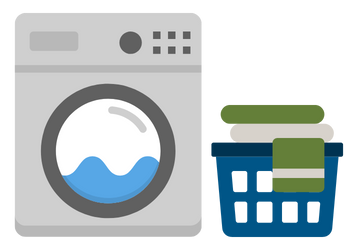
Sometimes also referred to as supportive services, in-home care, or homemaker services, these services are non-medical and do not require a doctor's order. Anyone can arrange for home care services, and they are typically private pay (paid out of pocket, not covered by insurance).
Some examples of home care or supportive services include basic household chores like housekeeping, meal preparation, and laundry, as well as assistance with activities of daily living, such as bathing, dressing, and grooming. Home care services are typically provided by trained caregivers.
Home Health

Home Health provides skilled services that are medical in nature. Home Health services do require a physician's order and are typically covered by Medicare and insurance. Jenna Meyer, the Health Services Director for Covenant Home Health, says, “In order for Medicare to approve coverage for skilled nursing services, you must have a doctor’s order, have a medical necessity for the services of a nurse or therapist, and must be considered homebound.” Some home health agencies like Covenant will help obtain doctor’s orders if you don’t already have them.
Home Health includes skilled nursing services such as post-surgery care, IV port monitoring, catheter care, ostomy care, and feeding tubes. It also includes other skilled services like physical and occupational therapy, speech therapy, and medical social services. Home Health services are provided by licensed, skilled professionals in the home.
What are the different levels of senior living care?
Independent Living
Independent Living provides the least amount or lowest level of care. Seniors who move into an Independent Living community are looking for a carefree lifestyle with access to services such as housekeeping, maintenance, a meal plan, planned activities, and transportation. Independent Living is most appropriate for seniors who can take care of their activities of daily living with little to no outside support. Depending on their care needs, sometimes a senior can receive additional home health services in their Independent Living apartment, as long as it’s safe for them to do so.
What is included in Independent Living?
While each community is a little different, monthly rent typically includes a meal plan, housekeeping, maintenance, 24-hour security, planned activities, scheduled transportation, and more. Access to amenities such as a fitness center, pool, indoor and outdoor activity spaces, and concierge services are also included.
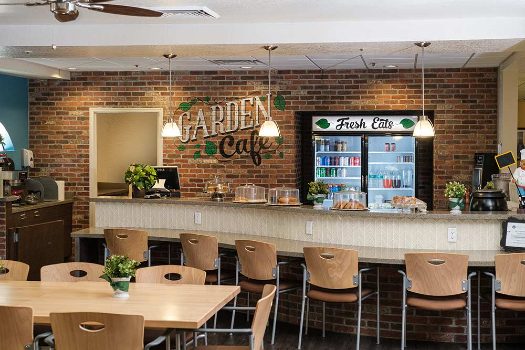
When reviewing your budget, it’s helpful to list these items side by side with what you are currently paying at home – people are often happily surprised at the value of the benefits provided at retirement communities.
Assisted Living
Supervisory Care is the lowest level, and Directed/Direct Care provides the most care.
Assisted Living facilities are licensed by the Arizona Department of Health Services (AZDHS) for one, two, or all three levels of Assisted Living care.
Assisted Living services are provided by certified caregivers under the supervision of a nurse and licensed Assisted Living Manager. Before moving into an Assisted Living facility, residents will have an assessment with the Manager to determine which level will be the best fit for them. After the assessment, the Manager will review the care plan with the resident and their power of attorney/medical representative.
Assisted Living is a good fit for those who are no longer able to live safely in Independent Living, even with added services. They require more assistance with their activities of daily living (such as bathing, dressing, and grooming), medication reminders/management, and meal preparation.
What is included in Assisted Living?
Monthly rent in Assisted Living includes three meals a day plus snacks, assistance with activities of daily living, planned activities, scheduled transportation, housekeeping, laundry, and more. Caregivers are on staff 24/7 to answer resident calls for assistance.
Skilled Nursing Facilities
Skilled Nursing facilities provide 24-hour skilled care in a licensed setting. Skilled Nursing facilities provide short-term rehabilitation after hospitalization or surgery, as well as long-term skilled care. Daily rates for skilled nursing are usually covered by Medicare and most health insurance plans.
In addition to skilled nursing services and assistance with activities of daily living, rates also include three meals a day plus snacks, individualized activities, laundry, housekeeping, and scheduled transportation. Items like personal care supplies, medications, supplements, and medical supplies are billed separately.
Continuing Care Retirement Communities (CCRCs)
Sometimes called Life Care Communities, CCRCs offer a full continuum of care on one campus. The advantage of these retirement communities is that as you age and your healthcare needs increase, you can move to a higher level of care without moving to a whole different community. The friendships you’ve developed with both fellow residents and staff remain intact.
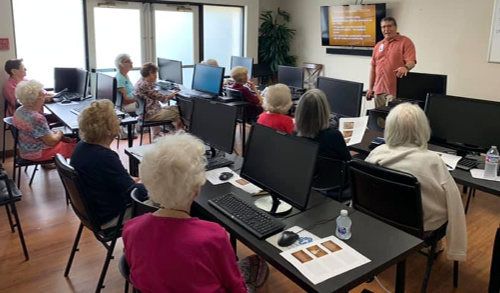
While the majority of CCRCs do require an entrance fee to be paid upfront, others, like Fellowship Square Phoenix, do not.
Why some believe in-home care is better.
Some people believe that home care is better because it gives patients more control over their care; they can stay in their own homes and receive individualized attention. Some also believe they will have more privacy and independence if they receive care at home.
While all of these points are true, they are equally true for seniors living in a retirement community, with the added benefit of services and amenities not available with in-home care.
As mentioned earlier, housekeeping, 24/7 security, transportation, activities, and meals are already included in the monthly rent when living in a retirement community. With in-home health care, these services are charged at an hourly rate. Hourly rates can vary depending on the service provided and whether it is given by a certified caregiver or a home care aide.
Seniors living in a retirement community are still free to receive home health or supportive services in their apartments. In fact, some home health agencies, like Covenant Home Health, offer a service package that helps facilitate the transition home after surgery or a hospital stay. Working with the care team at the senior’s retirement community, they can help ensure a successful transition home.
With doctor’s orders, residents can receive skilled home health services in their apartment homes and have them covered by Medicare or insurance.
Senior Living is better for overall health and wellness
What do retirement communities have to offer that in-home care doesn’t?
As we all learned during 2020, maintaining social connections is vital to overall health and wellness – for all ages. Seniors living at home alone experience isolation more than most age groups due to lack of physical mobility, loss of friends, hearing loss, and finances.

According to the CDC, recent studies have shown that older adults experiencing social isolation are at a higher risk of developing severe or worsening health conditions:
“Social isolation significantly increased a person’s risk of premature death from all causes, a risk that may rival those of smoking, obesity, and physical inactivity.“
Weekly or even daily visits from a private home care provider are helpful, but they can’t be compared to developing friendships and social connections with one’s peers.
Even during the height of the lockdown in 2020, retirement communities hosted creative events that adhered to safety restrictions while providing the essential human connection. Activity departments held music concerts in courtyards that residents could enjoy from their private patio or balcony, did ‘reverse trick-or-treating’ at Halloween, door-to-door Farmer’s Markets, meal delivery, and more.
Retirement communities are unique in that their network of services offers peace of mind that can’t be found with in-home care.
Family out of town, and you have a doctor’s appointment, or you need to go to the grocery store? If you’re living in a retirement community, not to worry. The transportation team has you covered. If you want to meet your friends for lunch or dinner, you can just walk down the hall or over to the next building; no need to fight traffic or call a ride-share service.
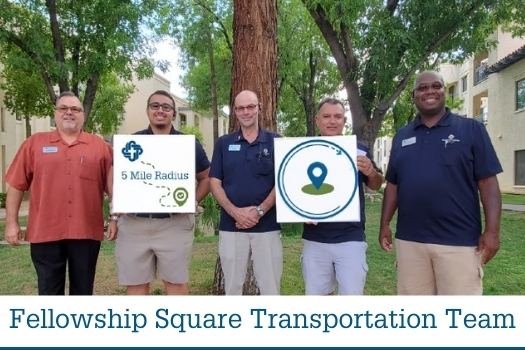
Some communities even have physical therapy and licensed home health agencies on-site, eliminating the need for transportation to a therapy appointment or searching for a home health agency on your own.
Your privacy and independence are still your own. If you want to spend the whole day on your own, enjoying your private patio, reading a good book, or doing absolutely nothing – it’s your choice. But it’s comforting to know you are part of a community – you are not entirely alone.
Costs of in-home care compared to the cost of senior living
When you are ready to start budgeting, Genworth’s Cost of Care Survey tool can be quite helpful in comparing the costs of in-home care to those of the different senior living options.
As an example, we entered a set of parameters* into their application and received the following information:
Note - monthly rents for Independent Living range depending on the size and square footage of the apartment chosen. Sometimes other factors, such as view or location can affect the monthly rate as well.
Fellowship Square has created a Cost of Senior Living Calculator that can help you evaluate the costs of your current living situation and see how they compare to those in a senior living community.
Conclusion:
Retirement communities provide a wealth of benefits that aren’t available with in-home care. From access to security, dining options, and amenities to opportunities for social connection, there are a variety of advantages to consider in your decision process. Those looking for a safe, engaging, and carefree lifestyle will find that senior living is the best choice.
At Fellowship Square, we have senior living options to meet a wide range of needs & desires. And, with a home health agency on-site, you can still receive home health services in your own home while enjoying all of the benefits senior living has to offer at a fraction of the cost.
Ready to schedule your tour? Give us a call at 602-833-4330 or send us an email, or fill out this form; we can’t wait to show you what senior living is really like!


